Have you ever heard of the term mise en place (pronounced “meez-ahn-plahs”)? If you’re a foodie, you probably know it’s a culinary term involving the systematic preparation and organization of ingredients and equipment before cooking a meal. Its translation is “everything in its place,” and it allows professional kitchens to run like well-oiled machines.
The sad truth is, most professional teams have a more… chaotic, reactive approach to work.
In a recent webinar, Jan Lehman, executive coach and CEO of CTC Productivity, shared a refreshingly simple framework for productivity that feels a lot like mise en place for the workplace. Get organized up front, protect the things that matter most, and keep communication flowing on purpose to avoid panic and reactivity. When you do, your mind gets quieter, quality improves, and you leave work with energy still in the tank.
The Three T’s: Time, Talent, and Technology
TIME
The magic behind mise en place—and great productivity—isn’t doing everything faster. It’s doing the right things first. Start with the three Ts—time, talent, and technology. Time is your freshest ingredient and the one that will spoil first. When time is guarded, you can use technology intentionally instead of reactively, and can accomplish the work that actually moves the business forward. In other words: prep before plating.
Begin each day with a short prep list. Choose your top three priorities—the high-value tasks that carry the most weight, also known as the Pareto Principle: 80% of your results come from 20% of effort. This translates to a few critical actions that deliver most of your results. When those actions (or ingredients) are prioritized, you stop reacting to noise and start making an impact. So, before your day starts, identify your 20%. What tasks, if completed, will pack the biggest flavor punch?
To help you hit all three of your top priorities, block out at least one hour of uninterrupted time a day and protect it like the precious ingredient it is. If you can, choose a time of day when your brain is sharpest. Make it visible so your teammates know not to disturb you unless there’s a true emergency (a calendar block, a status message, or even a simple door sign). When leaders model this practice, the habit tends to spread, and productivity skyrockets.
Research suggests it can take roughly 23 minutes to recover after an interruption. 23 minutes. That’s significant. So, turn off nonessential notifications like emails, chat pop-ups, and badge counts. You’ll still check messages, of course, but do it on your time. Don’t allow these digital attention-seekers to pull you off task. This single shift reduces errors, lowers stress, and helps you finish the day with measurable wins.
By the way, this would be a great time to define “emergency” and “urgent” so the whole squad has the same understanding of both. Only an emergency justifies an interruption; everything else can be communicated by email or other channels. Set a shared time expectation for “urgent,” too, and label messages accordingly. For many teams, a 24-hour response time works well. Add these realistic due-by dates to the subject line of your emails to prevent reflexive, drop-everything responses to non-critical requests. This is an especially helpful tactic for executive leadership team members to adopt when communicating with subordinates. When standards like these are clear, people can honor their top three priorities and still be reliably responsive.
TECHNOLOGY
Most organizations underutilize technology, not because tools aren’t powerful, but because people tend to use them reactively instead of strategically. The key is to integrate tech into your workflow to create time, not consume it.
Sometimes, when you’re in the flow, an idea will pop into your brain. Things like people you need to call back, small tasks, or maybe even a clever angle for something. Instead of allowing these little nuggets of good faith to derail you, use technology to capture them. Task tracking programs provided by Microsoft and Google, for example, are great for this, especially when integrated into your calendar. After the idea has been quickly recorded, you can return to the work at hand.
Let the technology do the remembering, so your brain can focus on creating. It’s the productivity equivalent of a chilled pan: it holds things until you’re ready to cook them.
TALENT
Most meetings are only necessary because of communicative inefficiencies. Communication can certainly be messy. But if you can make communication more efficient, many meetings can be canceled indefinitely. Doesn’t that sound like a dream? Use topic- or task-specific Slack or Teams channels for updates, adopt logical and consistent naming conventions, keep agendas concise, and make decisions in those places, for easy reference and context. Fewer, better meetings create room for focus time across the organization.
Make these shifts cultural, not personal. Productivity isn’t one superstar chef; it’s a consistent, functional kitchen full of competent individuals. Bake expectations into onboarding and performance conversations and get buy-in from senior members within the organization. Explain what focus time means, when to use which tool (and why), response expectations, and how to indicate urgency. People feel safer and more motivated when they know the rules of the house—and they’re invited to uphold them.
Try this seven-day mise en place productivity challenge:
- Day 1: Write your top three priorities by 9 a.m.
- Day 2: Block a daily focus hour and make it visible.
- Day 3: Turn off nonessential notifications and set two “check comms” windows in your day.
- Day 4: Set emergency vs. urgent expectations (and establish a practice for indication).
- Day 5: Start labeling subject lines with urgency and due-by dates.
- Day 6: Create shared/assigned to-do lists for frequent collaborators.
- Day 7: Analyze what improved and iterate and refine as needed.
Here’s the quiet truth: productive teams don’t move faster; they move cleaner. Like a kitchen with sharp knives and clear stations, they trade friction for flow.
How ELB Learning® Can Help
If your organization is ready to adopt a mise en place mindset, ELB’s learning strategy services can help you develop the “back of house” behaviors that create electric focus time, effective communication practices, and streamlined collaboration. We’ll partner with you to align culture and technology, so your teams can consistently produce succulent dishes that help you meet your business goals—without burning out.
Watch the full webinar below—complete with thoughtful Q’s and A’s—to get a full picture of Jan’s productivity prowess.
To learn more about ELB’s learning strategy services, click here.
_______________
Disclaimer: The ideas, perspectives, and strategies shared in this article reflect the expertise of our featured speaker, Jan Lehman. Be sure to follow her on LinkedIn to explore more of her insights.




_Blog%20Featured%20Image%20800x500.png?width=388&name=Recap%209-4-25%20Why%20You%20Should%20Train%20Sales%20Leaders%20Like%20Cats%20(Not%20Dogs)_Blog%20Featured%20Image%20800x500.png)


